
This is post #28, part of my #50PostsIn50Days personal challenge to document my first 100 days in Hong Kong. Other posts in this series may be found at the bottom of the original post.
Sometimes it feels overwhelming to live and eat in Hong Kong. The city is buzzing with so much food activity it's virtually impossible to keep up. It still blows my mind how many top chefs have set up shop here, and how many new top chefs continue to arrive.
Additionally, because for months we lived right above Harbour City and the newly opened Ocean Terminal wing, it felt like new restaurants were popping up almost weekly right within walking distance of our home.
We've made a valiant effort to try many of these new places, including HAKU, probably one of the hottest and most anticipated restaurants to open in Harbour City this past year.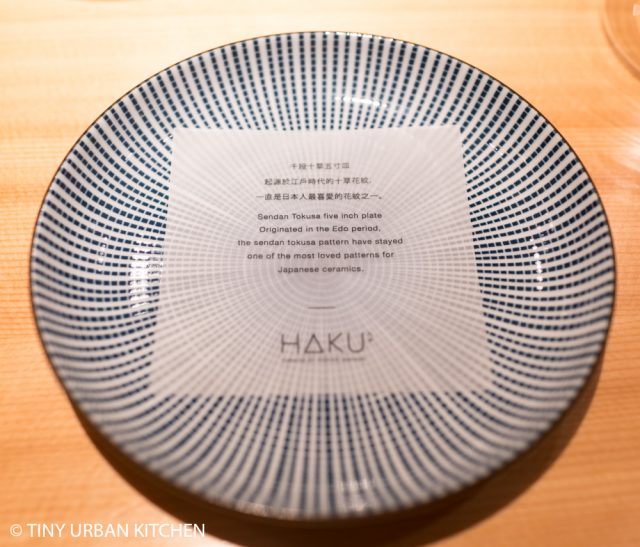
HAKU is a collaboration between 3-Michelin starred Japanese chef Hideaki Matsuo (chef of Kashiwaya in Osaka) and Argentina-born Chef Agustin Balbi, who most recently came from Ocean in Repulse Bay in Hong Kong, but previously worked at various Michelin-starred Japanese restaurants in the US.
HAKU calls itself a restaurant with "a Japanese heart" but with "influences from around the globe." It sources Japanese seasonal ingredients and and relies upon Japanese techniques, yet incorporates a global influence reflecting the diversity of Hong Kong.
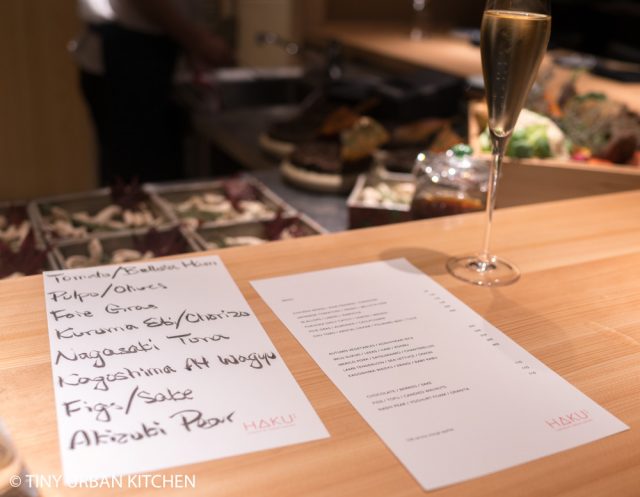
The restaurant is located in Ocean Terminal sort of tucked away from the hustle and bustle of the massive Harbour City mall. I would recommend trying to sit at one of the eleven counter seats, which allows you to watch the chefs prepare dishes in front of you (it's fascinating and fun!). Of course, if you are with a slightly larger party, they do have some tables as well as a private room.
There is an a la carte menu, but most people opt for the tasting menu, which allows you to try many more dishes ($1380 HKD, around $177 USD, for 8-course set menu). Soon after we ordered the tasting menu, we received a hand-written version of the menu, which gave us a hint of what was to come.
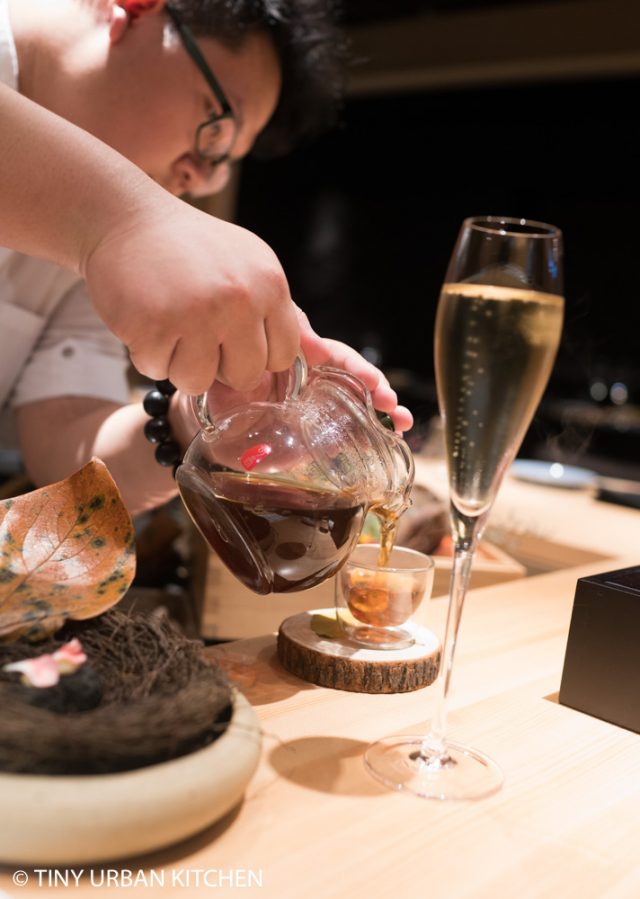 |
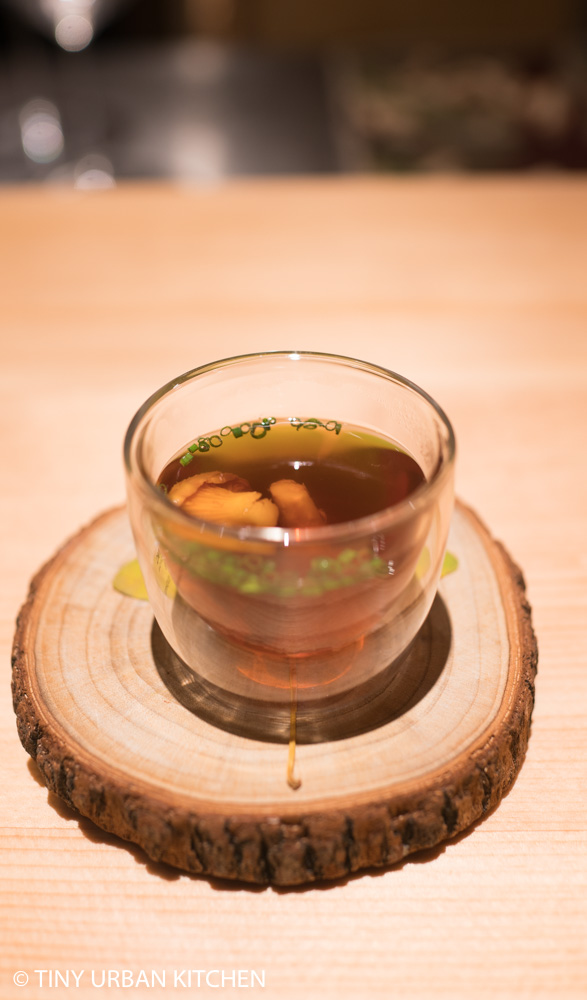 |
As you know, most tasting menus include a lot of extra courses, whether they be an amuse bouche or a palate cleanser. Before the first official course, we started with a black tea consommé with katsuobushi, the dried and smoked fish flakes made from skipjack tuna, or bonito fish. It was clean with umami from the fish as well as the mushrooms inside.
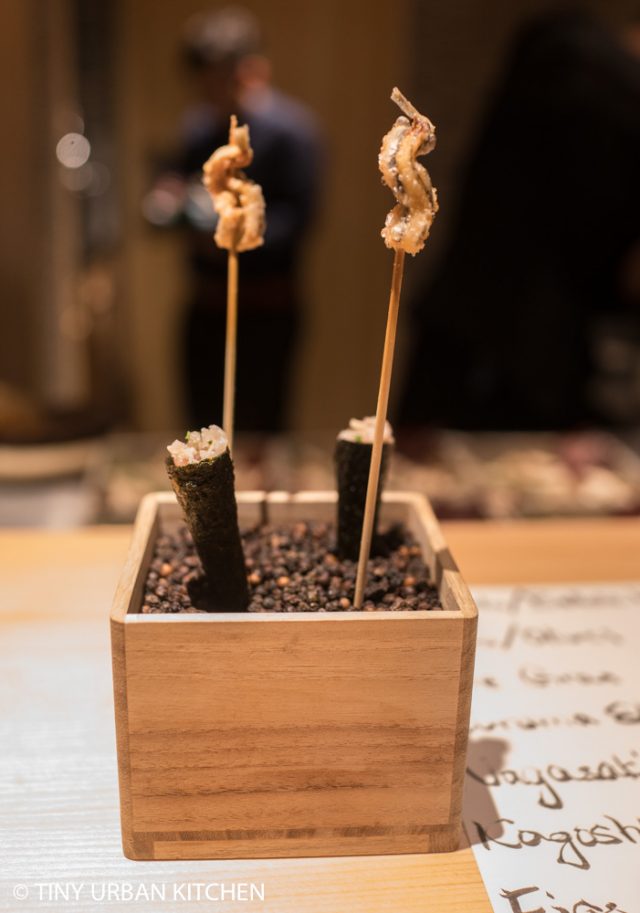 |
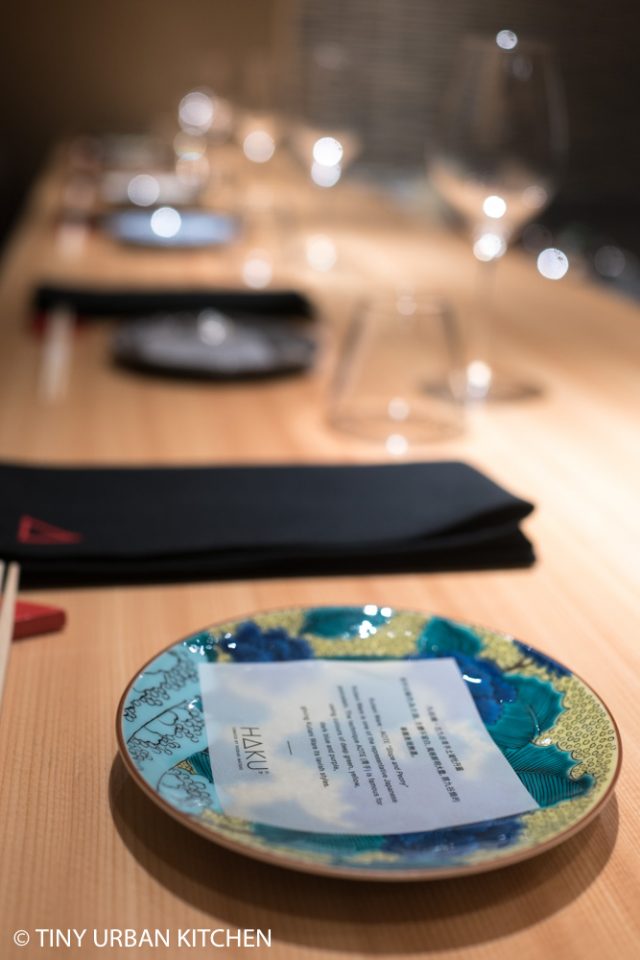 |
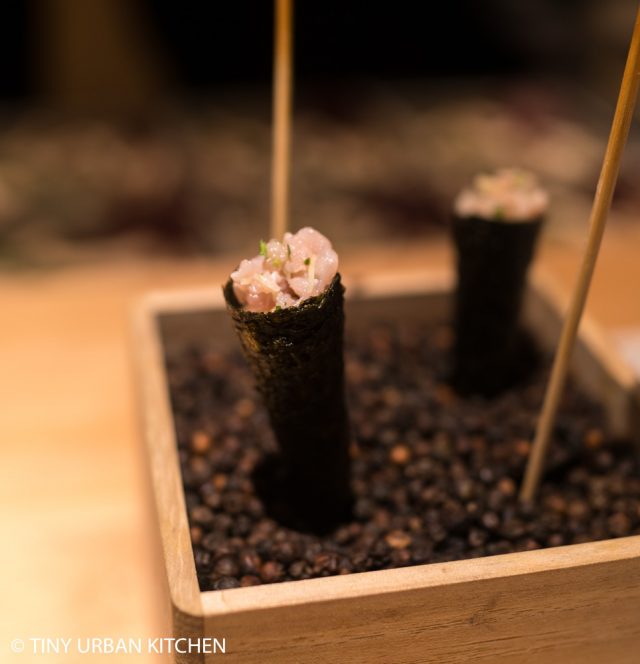 |
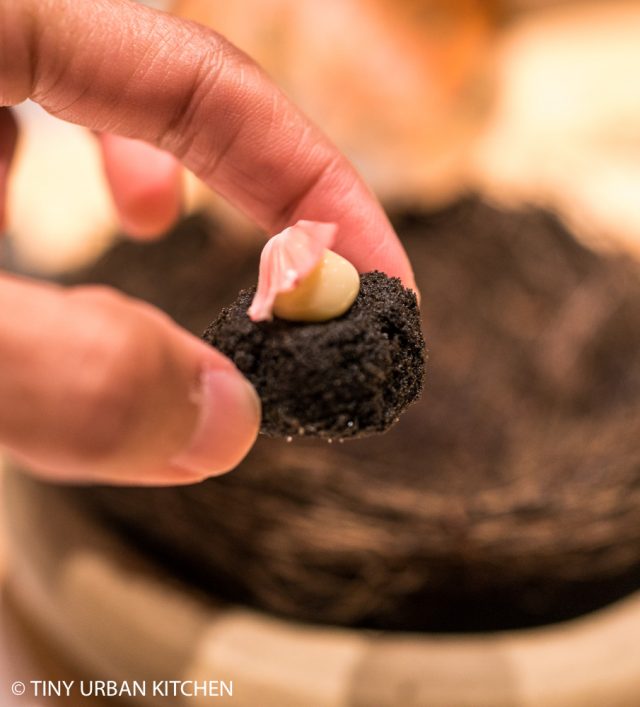 |

And then finally our first course came! Simply called Tomato/Bellota Jam on our menu, this dish consisted of Kyushu and Hokkaido tomatoes tossed with shio kombu (salty seaweed), iwashi (sardines), and 34-month aged jamón iberico de Bellota. The whole salad was topped with sake kasu, lees left over from sake production dried and ground into a powder (kind of like cheesy breadcrumbs). The server advised that we mix everything together in order to enjoy all the different flavor and textural elements together.
The ingredients were fresh, and their natural flavors spoke for themselves. I especially loved the super sweet Japanese tomatoes and the crunchy, flavorful sake kasu.
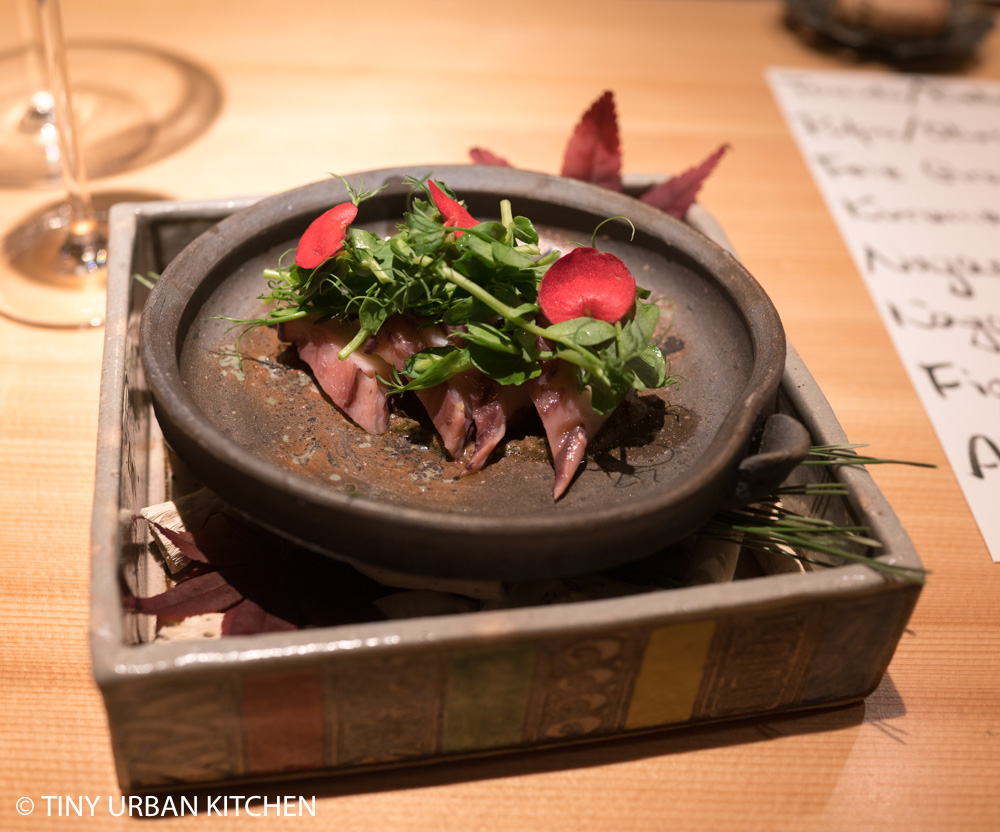
The next course, Pulpo/Olives had slices of Spanish octopus, olives with their own olive oil, and fresh pea tendrils. The octopus was a bit tougher than I prefer, and something in the dish was just a tad sandy. The flavors were decent, but those other aspects detracted from the dish.
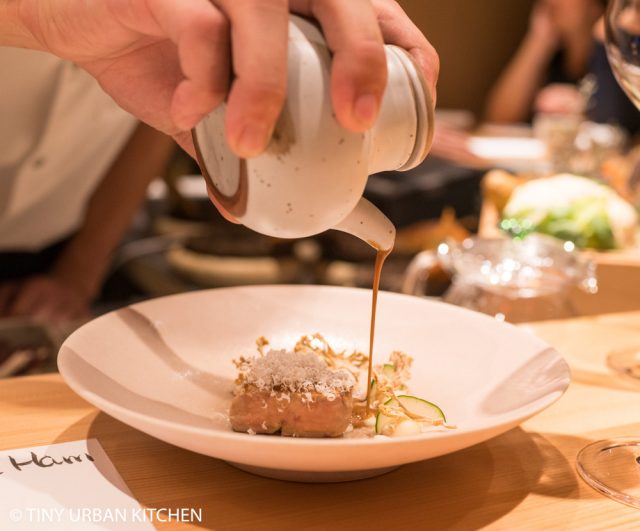
Our next course Foie Gras was a block of foie gras from France served with a delicate topping of shaved almonds (it looked almost like cheese!), paper-thin slices of Japanese cucumber, a velvety cauliflower purée, and dried cauliflower chips. A creamy brown butter sauce was served table-side.
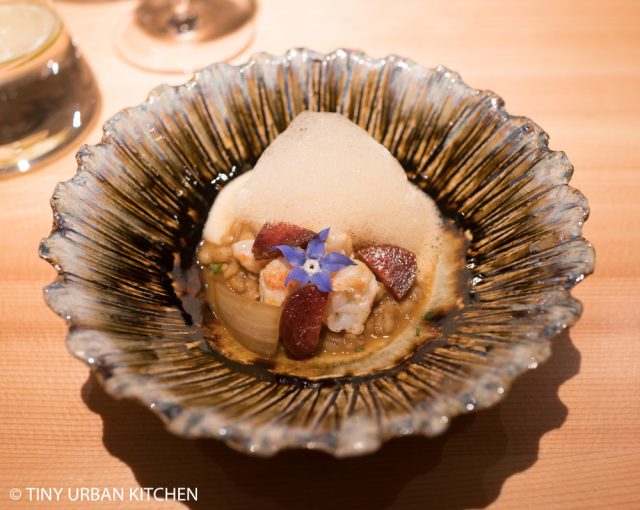
Our next course Kuruma Ebi / Chorizo had Kuruma ebi (shrimp) from Kyushu, chorizo, and onion petals cooked with smoked paprika in a shrimp stock and topped with a delicate milk foam.
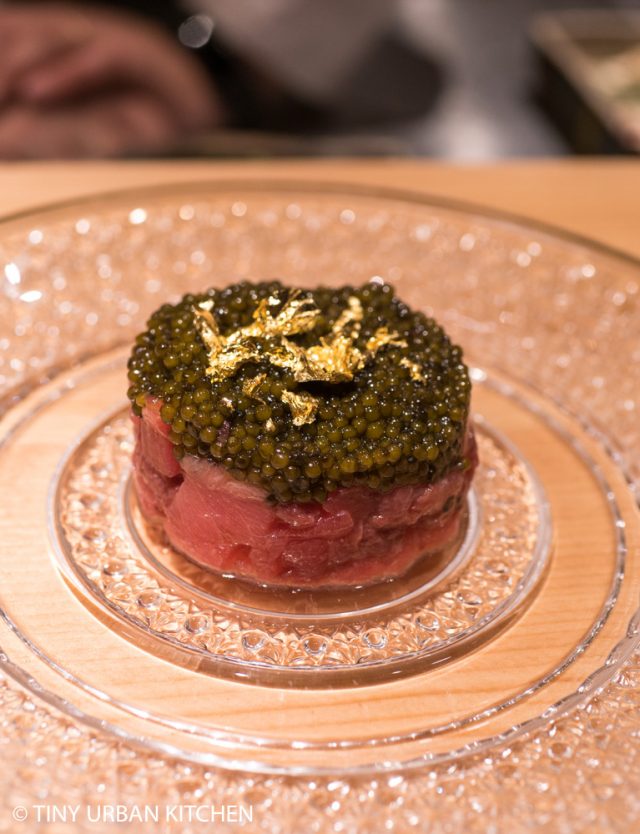 |
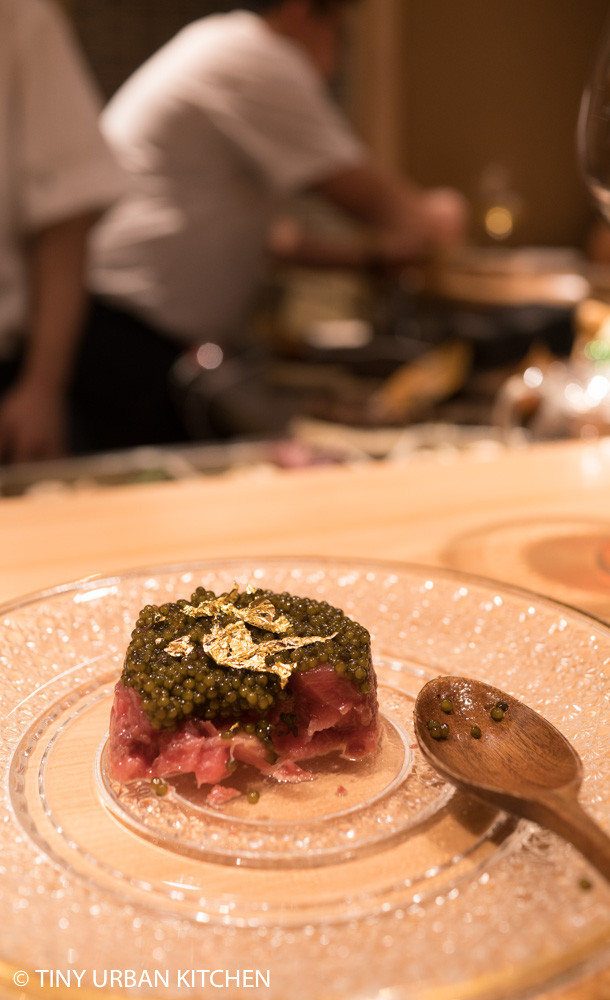 |
This next course Nagasaki Tuna is one of the restaurant's signature dishes and includes many, many decadent premium ingredients. The tartare portion consists of a mixture of very exclusive and special tuna and beef.
The tuna is chutoro (medium fatty bluefin tuna) from Nagasaki, Japan. Nagasaki is known for being on the forefront of farming bluefin tuna in an effort to address the sustainability issues of the fish. I don't know if this particular tuna was farmed or not.
The beef is Polmard beef from France, one of the most expensive and hard-to-access beef in the world. The Polmard family developed a way to age and preserve beef "indefinitely" they claim, by blowing cold air at a speed of 120 kilometers per hour over beef while stored at -43° C. An old, vintage cut of a Polmard rib steak from the year 2000 sells for €3,000 a steak (!). Alexander Polmard is very selective about the restaurants to whom he will sell his beef, so it's a rare treat to even be able to taste it. The Polmard steak in this tartare was only aged for 5 days (not 15+ years!), but nevertheless is still rare.
On top of this decadent mixture of premium rare meats is a layer of Kristal Ossetra Caviar and gold. Ponzu and salt round out the flavors, and we enjoyed this with rice paper tuile crackers.
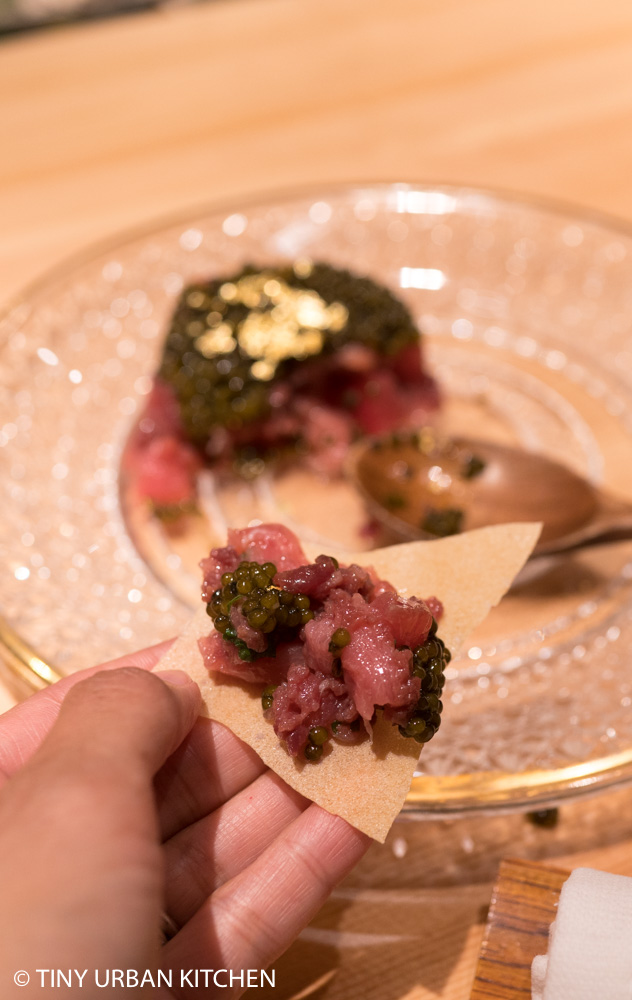 |
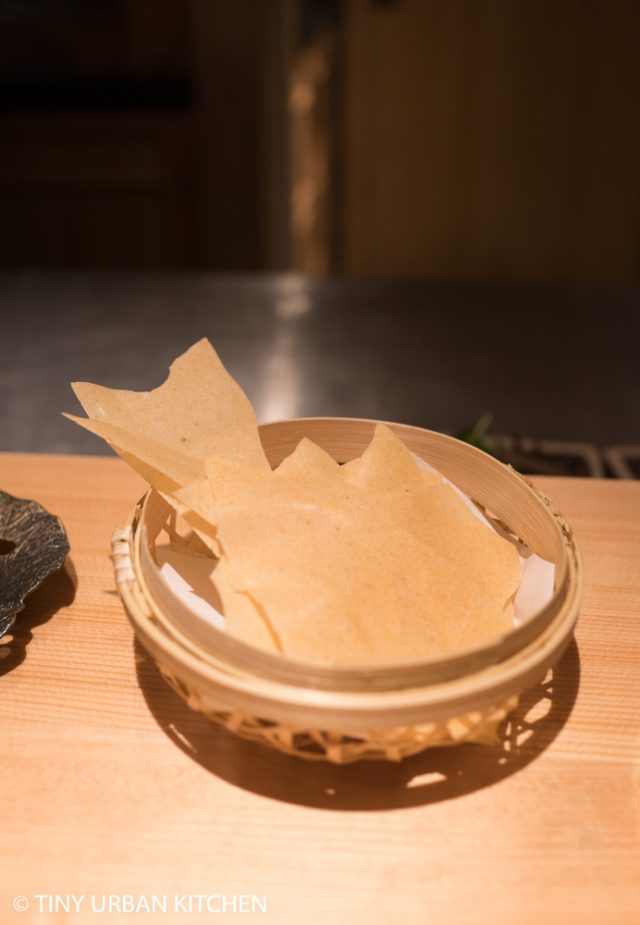 |
The dish was delicious (how can you go wrong with these ingredients?), though I'm not sure if I could fully appreciate the extremely elevated tuna and beef. It was a pleasant dish, but not necessarily one that blew me away. I think a much less expensive version of this dish (sans gold and super premium fish/beef) would still taste very, very good at a fraction of the cost.
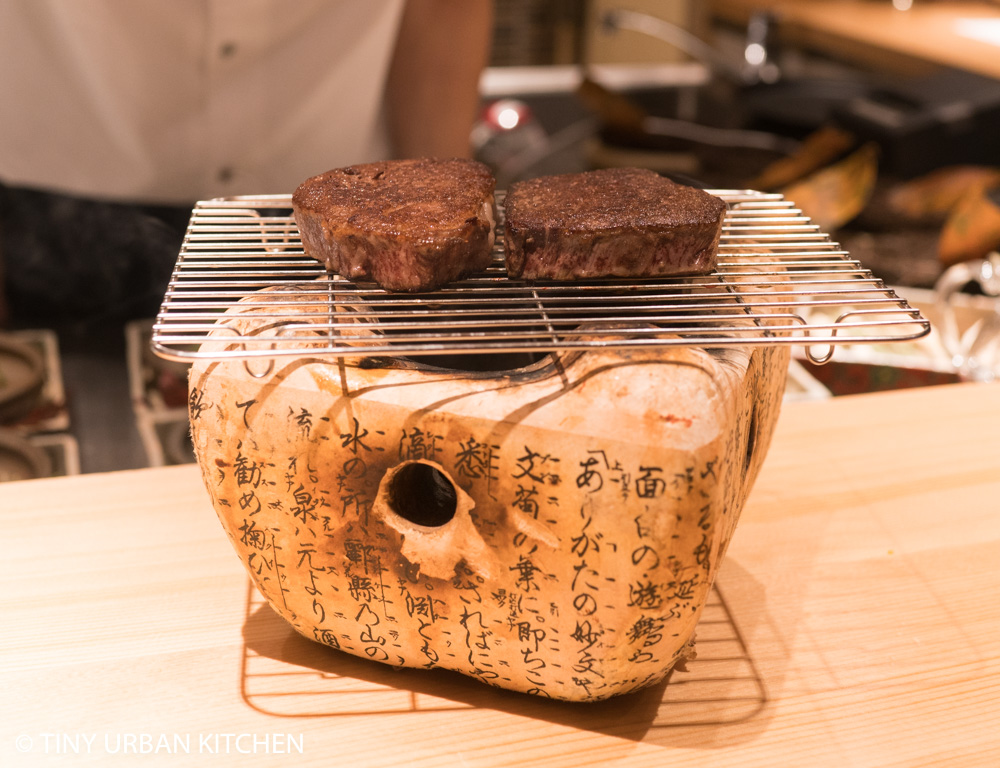
Our final savory course Kagoshima A4 Wagyu was dramatic in presentation! Out came two pieces of Nozaki Kagoshima A4 wagyu beef cooked in front of us over cherry wood and binchōtan, a Japanese white charcoal that dates back to the Edo period. The smell was intoxicating, and the beef was just beautiful!
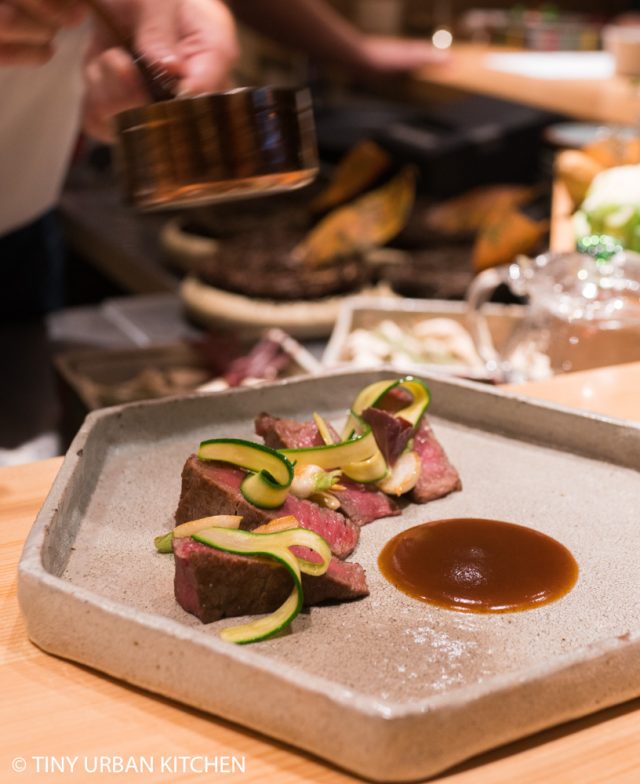 |
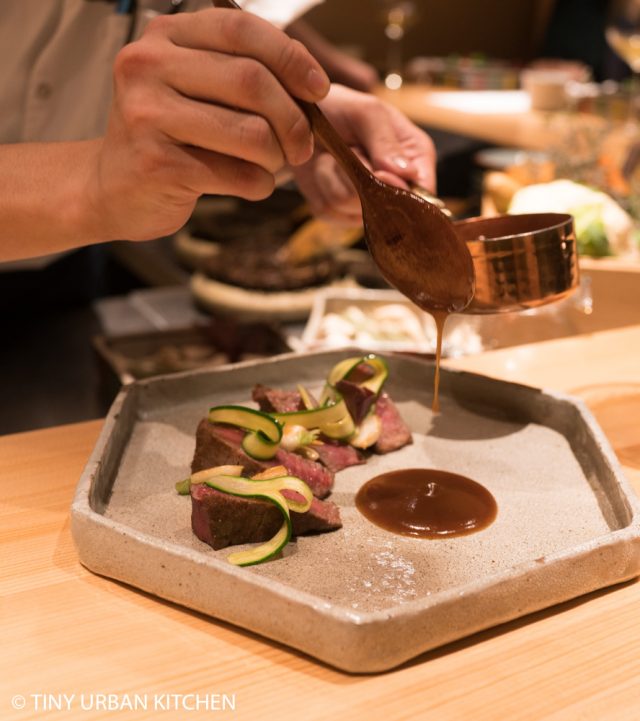 |
We savored these perfectly cooked pieces of medium rare beef with slices of baby kabu (zucchini), eryngii (king oyster) mushrooms and hakurei turnips together with a deep, rich beef jus. The beef was simple but fantastic. We enjoyed this with a bowl of Hijiki seaweed rice from Japan (not pictured).
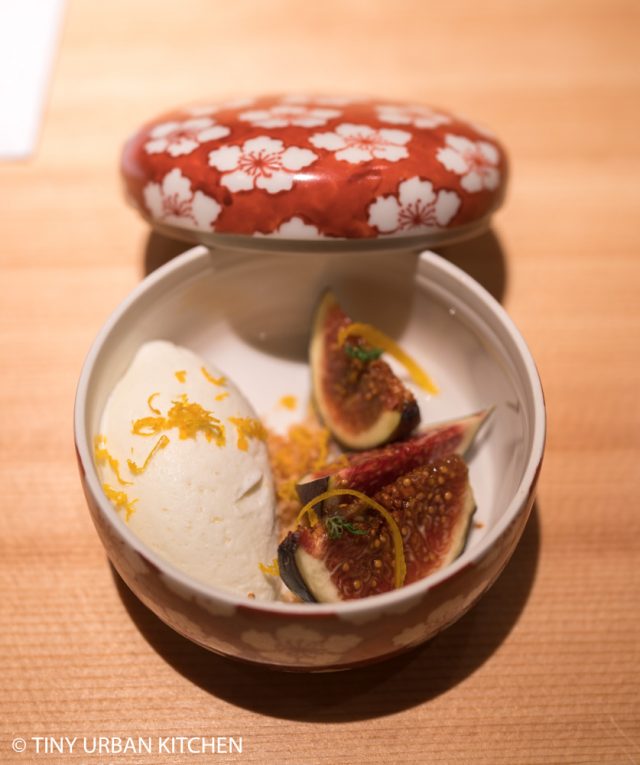 |
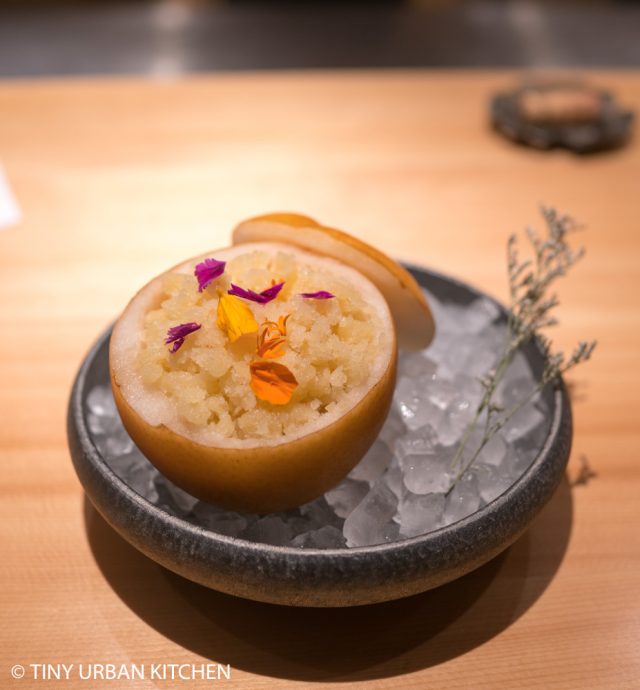 |
Figs/Sake was our first dessert, which included fresh figs, tofu, candied walnuts and sake ice cream. Our second dessert, Akizuki Pear, consisted of a hollowed out pear filled with Hokkaido yogurt foam and granita. Both desserts were light, refreshing, and not too sweet. It was a pleasant way to end the evening.
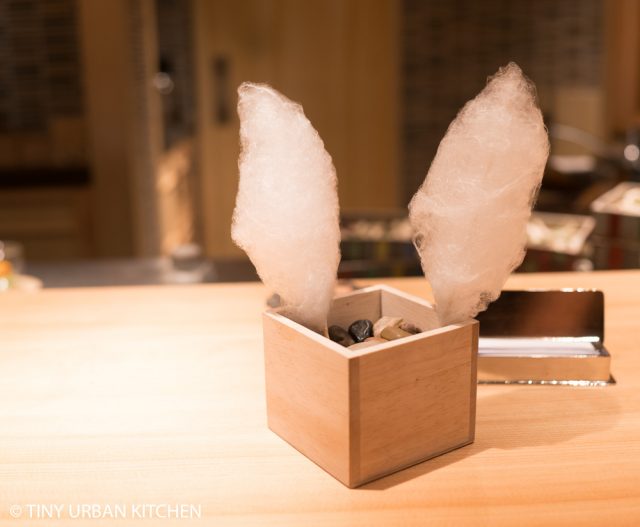
Finally, we were greeted with two cute little cotton candy sticks, a playful, nostalgic way to end the meal.
General thoughts - HAKU Hong Kong
We had a lovely dinner at HAKU. The service was attentive, warm, and friendly. I loved sitting at the counter and watching the beautiful dishes come alive right in front of me. It didn't feel at all like we were inside the mall, save for the one time I had to exit the restaurant to use the restroom.
The food is definitely well thought-out, beautifully presented, and there is no doubt that they are using top notch ingredients from around the world. Personally, however, I'm not sure if I was able to fully appreciate the value of each premium ingredient. The meal was lovely, for sure, but I'm not sure if the flavors and overall gustatory experience reached a level where the meal actually blew me away, especially at that price point.
Having said that, I also went to the restaurant quite early in its days. I think it was about three months old when I went, so I'm sure they were still tweaking and ironing things out. They have most certainly nailed the artistry of presentation, warm service, and very good food with premium ingredients. If cost is no object, this is quite a good place to conduct a business meeting or treat someone to a special, impressive experience.
HAKU Hong Kong
Shop OT G04B, G/F, Ocean Terminal,
Harbour City, 17 Canton Road
Tsim Sha Tsui, HONG KONG

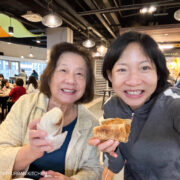
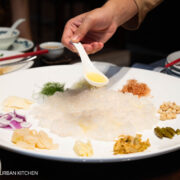
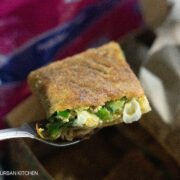
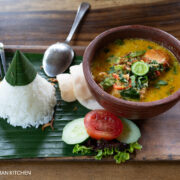
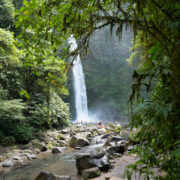
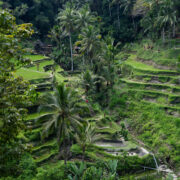
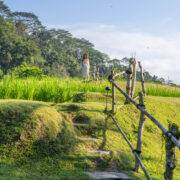
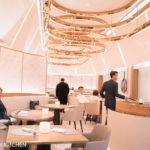
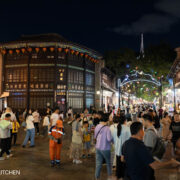
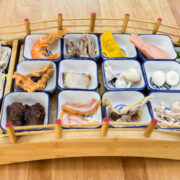
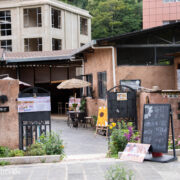
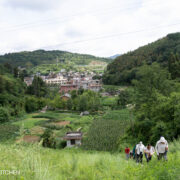
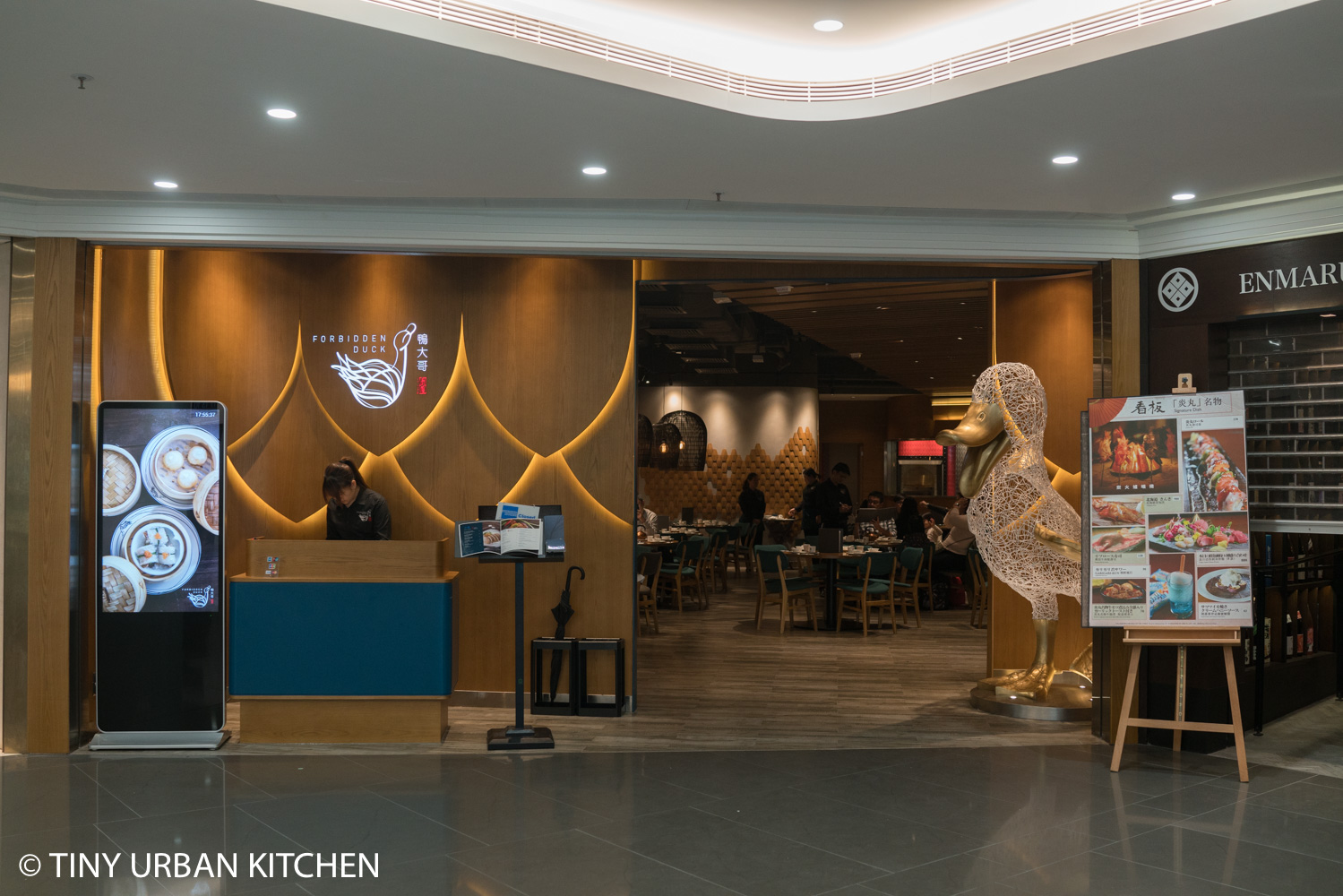
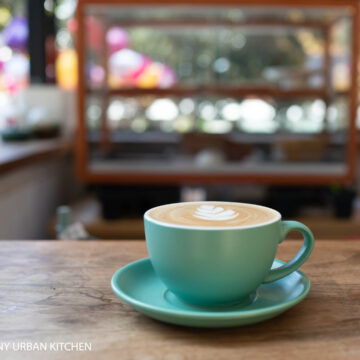
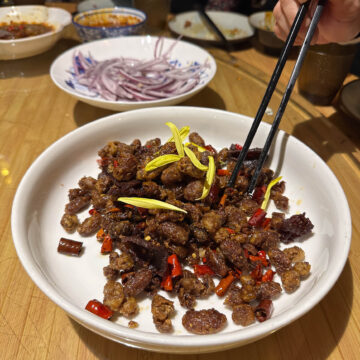
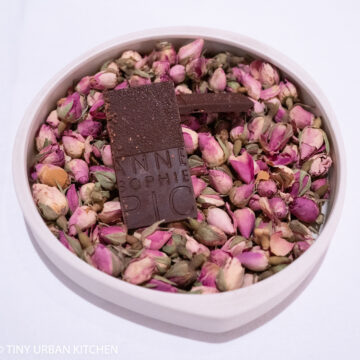
[…] Author Jennifer Che Source link […]